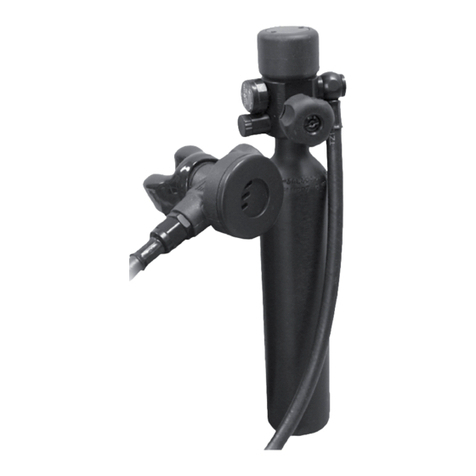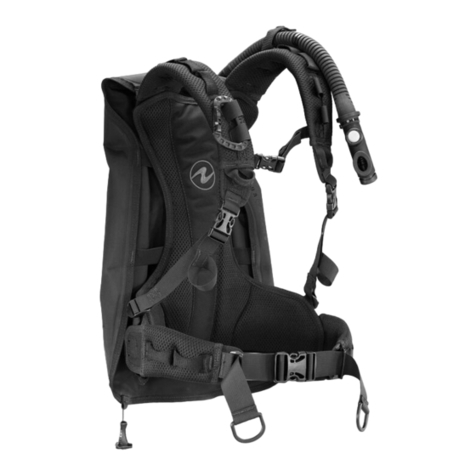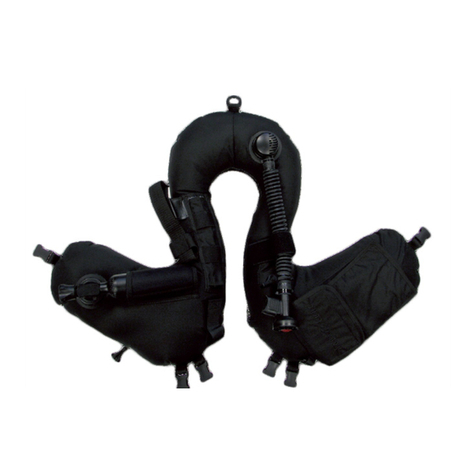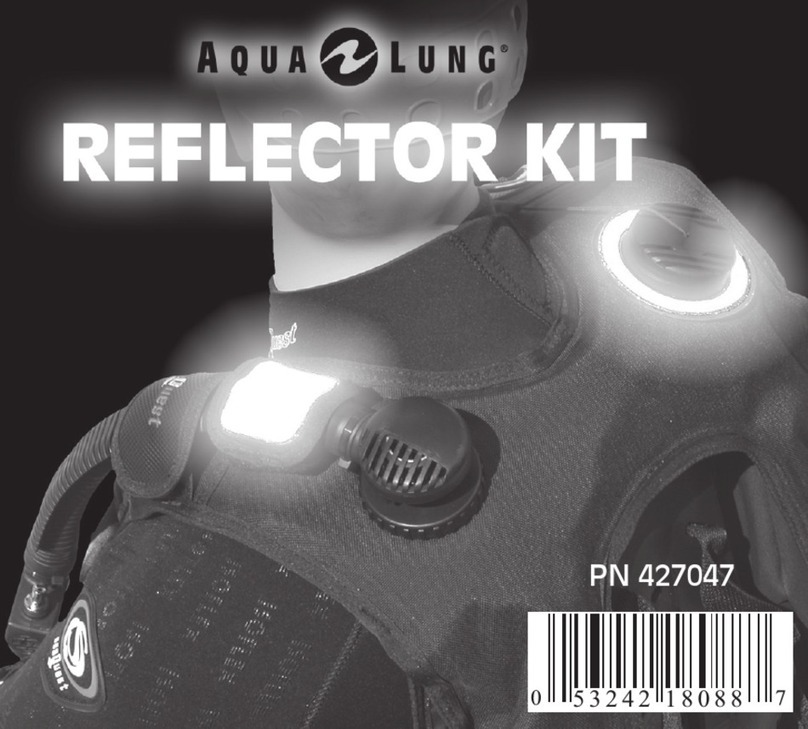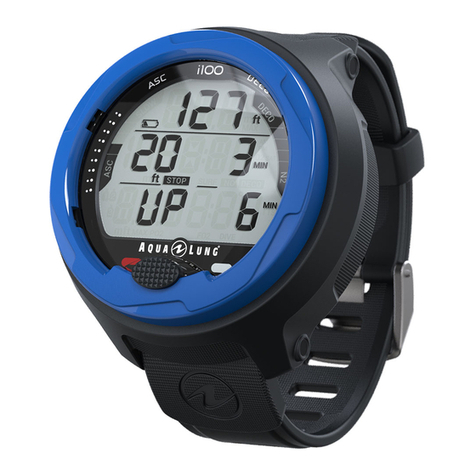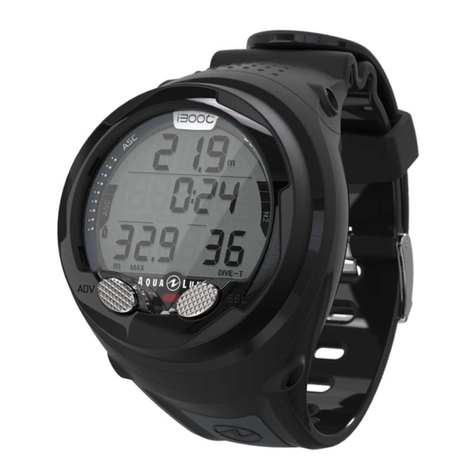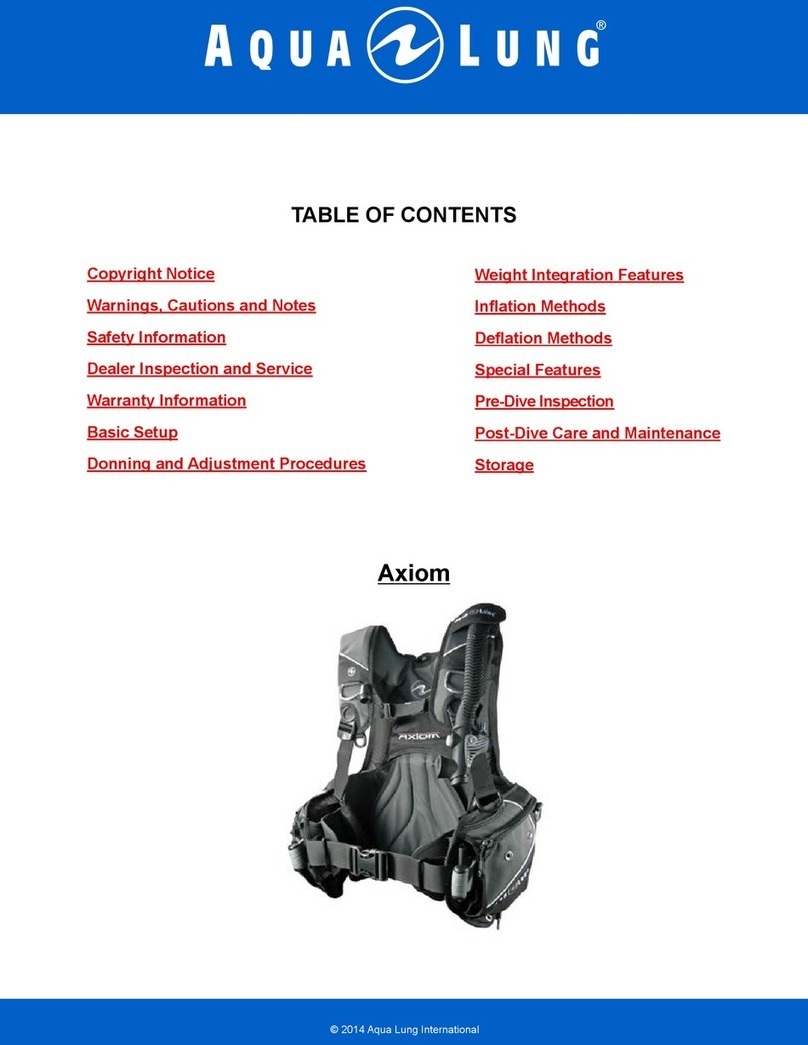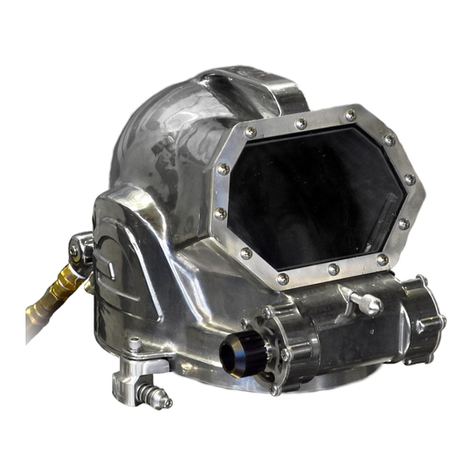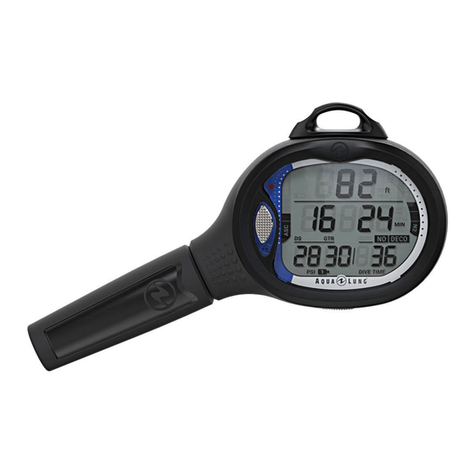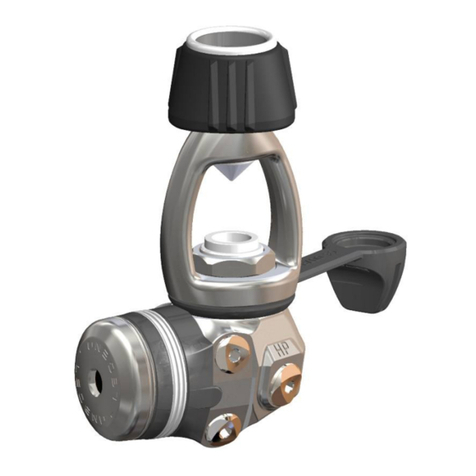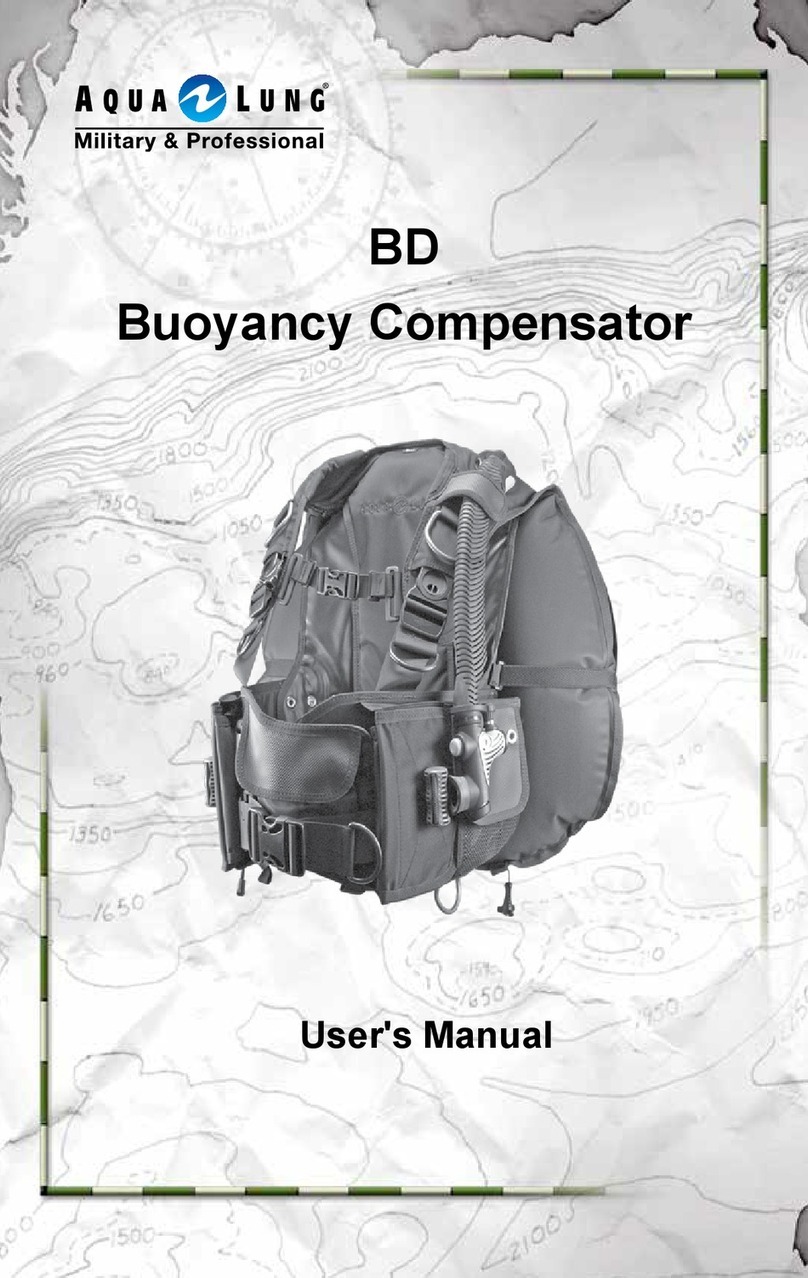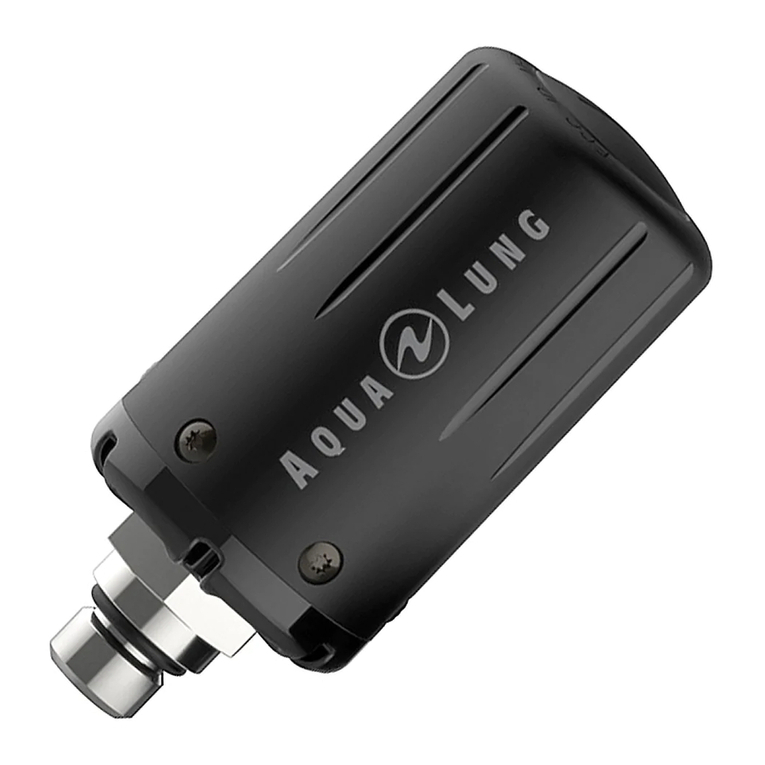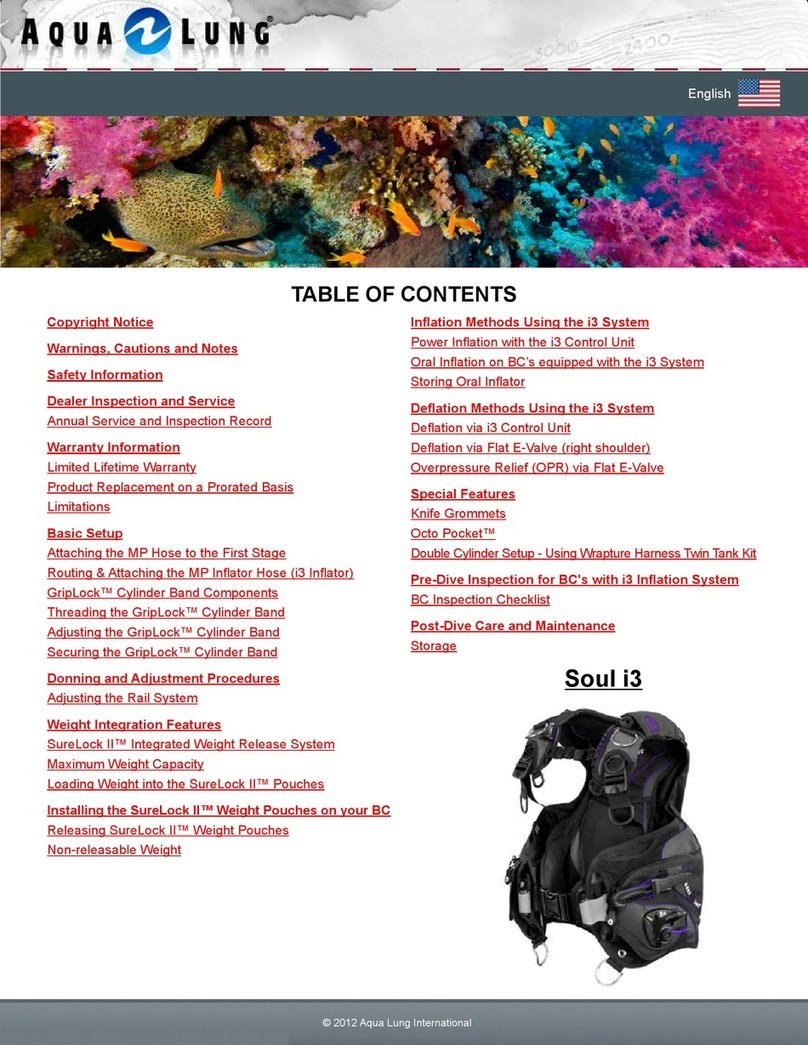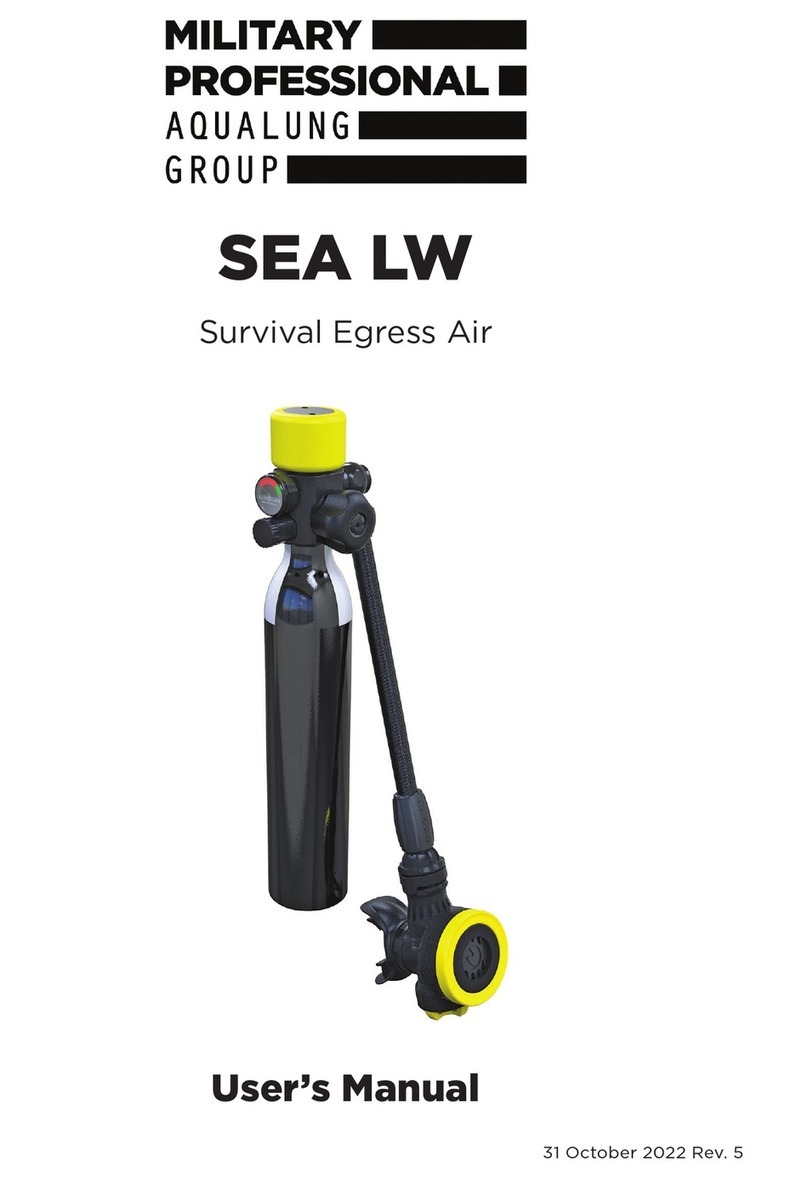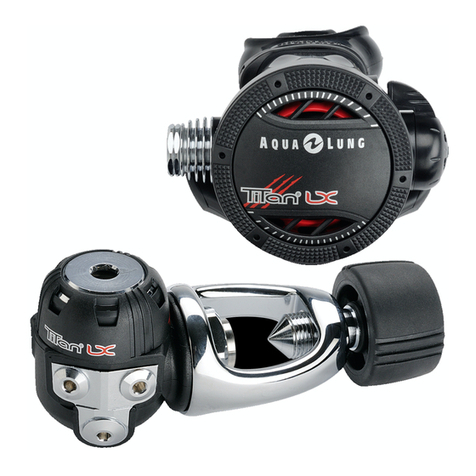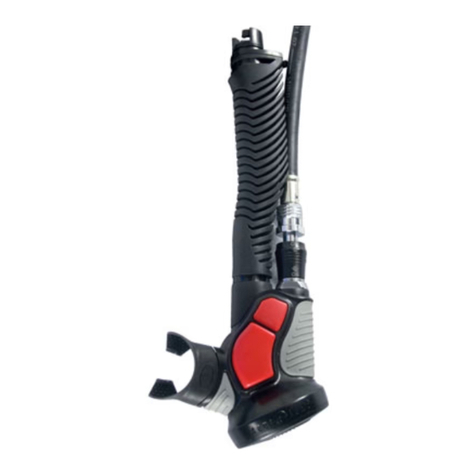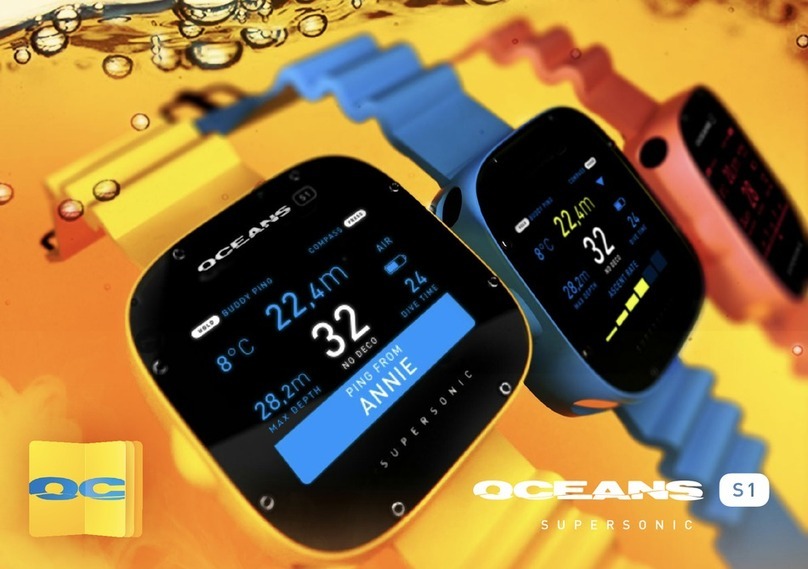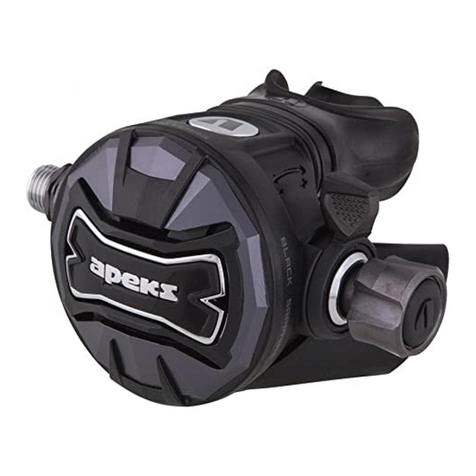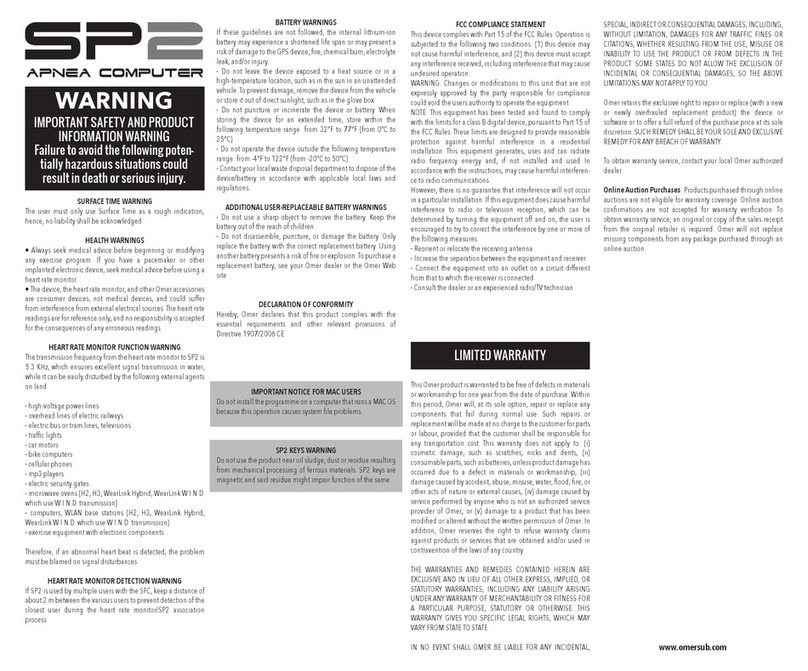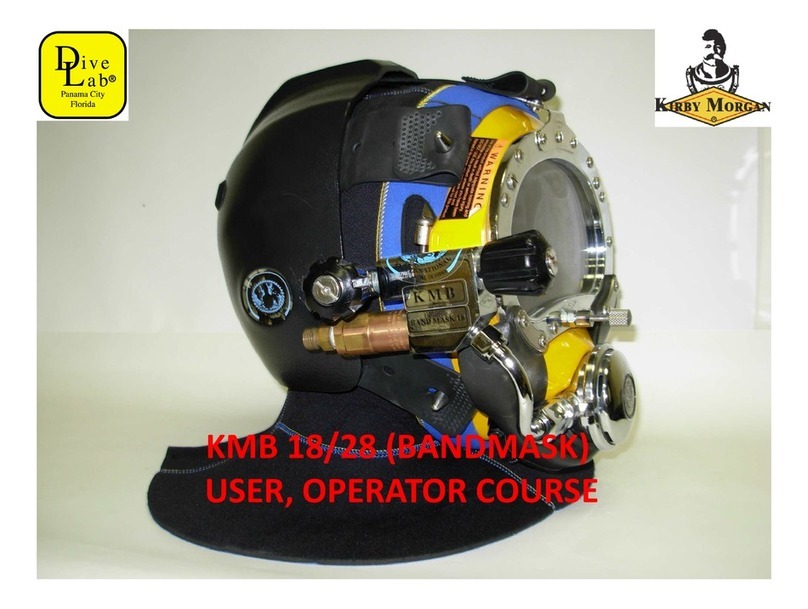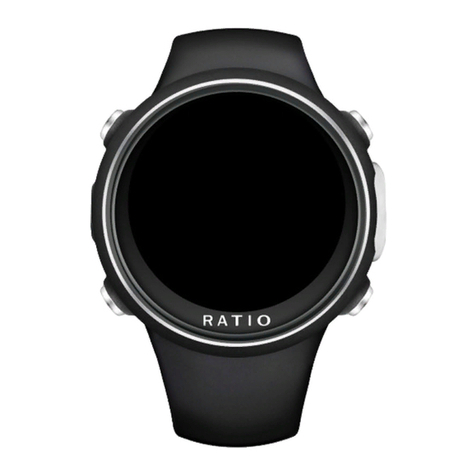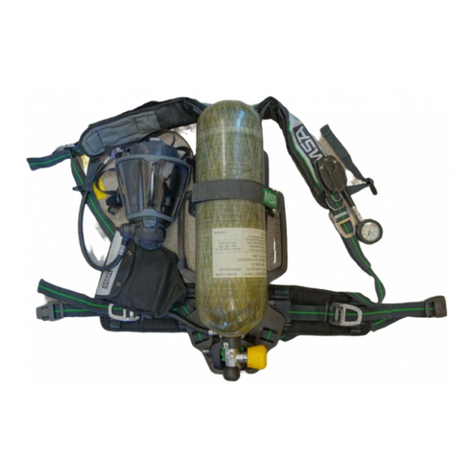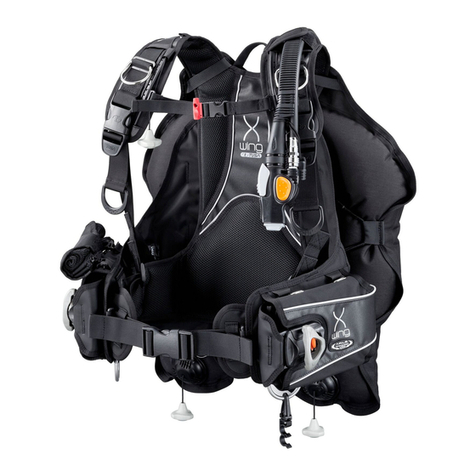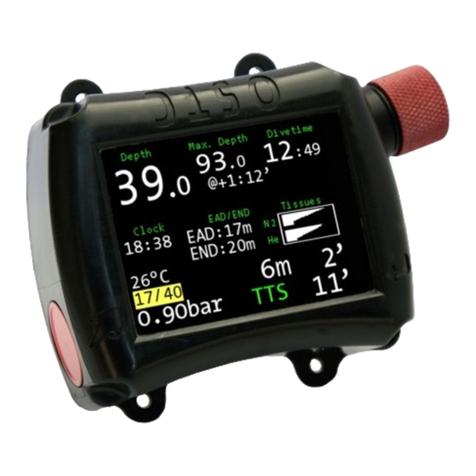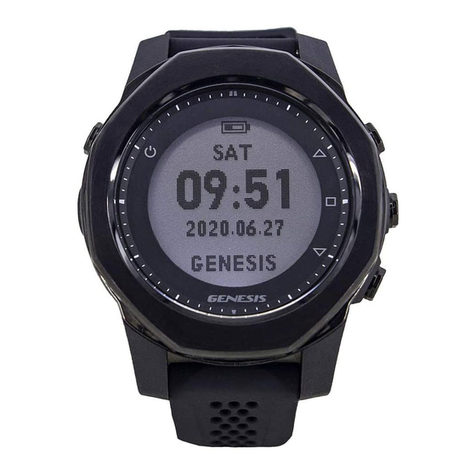
9CALYPSO BC USER'S MANUAL
WARNING:
emergency, such as an out of air situation.
To provide emergency otation on the surface, the BC can be rapidly inated
by pulling on the lanyard attached to the CO2 inator mechanism. Before
entering the water, ensure that the CO2 cartridge has not been previously
used, and explain the function of this mechanism to your buddy.
WARNING:
to rise faster than the maximum allowable ascent rate of 30 fpm,
leading to an increased risk of decompression sickness or air
embolism, both of which could result in severe injury or death.
Throughout the course of a dive, it will be necessary to release air from the
BC using one of the three methods described below: Each method uses a
valve that is in a different location. The method you choose at any time may
depend on whether you are making your initial descent feet rst, head rst, or
maintaining neutral buoyancy underwater. Always remember to utilize the valve
that is at the highest point on the bladder, depending on your position.
WARNING: Whenever you ascend, whether intentionally or acci-
dentally, you must simultaneously vent air from the BC as needed
to maintain buoyancy control. If air is allowed to expand inside the
BC unchecked, you may experience a rapid, uncontrolled ascent,
which could lead to serious injury or death if not immediately
corrected. To regain buoyancy control during an uncontrolled
ascent, you must continuously exhaust air from the BC until you
have stopped ascending.
Air can be vented through the inator by holding the inator above your head
and depressing the oral inator button. This method can be used for making
an initial feet rst descent, but is not very useful while you are in a face down
swimming position.
NOTE: Depressing the oral inator while the BC is empty may
cause water to enter the air bladder.

